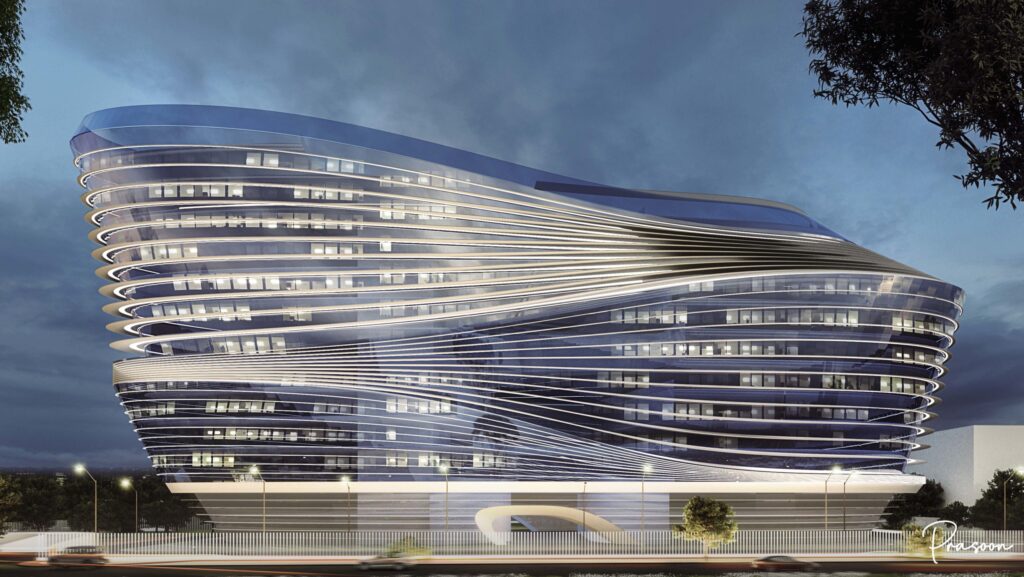A key reason behind the growth of construction in the UAE region has been the innovation in planning and design. Modern and contemporary structures are being developed across cities in the region, with greater emphasis on sustainability, longevity, and ecological balance. This is precisely why computational design is rising in popularity among UAE developers, as it streamlines the process of codifying interdependent elements.
From the orientation of the structure to its geometrical shape, various iterations in the design stage can be generated to construct the best building that conforms to international standards. The top design consultants in UAE, including Prasoon Design, also implement sustainable practices within the design stage, leveraging the feature-rich capabilities of computational design.
Computational design is also enabling designers in the region to rethink their design philosophies and introduce new concepts through structured planning. It is enabling them to merge the traditional and the modern effortlessly while allowing them to showcase awe-inspiring designs to developers. Let us understand the critical trends in CD that are driving UAE designers to innovate significantly.
Driving aesthetic excellence through computational design
The top architects in UAE are focusing on enhancing the aesthetics of every structure through the power of computational design. By letting computational systems generate high-quality design versions in a shorter timeframe, architects can refine their thought process further. The aesthetic vision of architects in the region is practically brought to life through computational processing.
Aesthetic excellence is not limited to that of the exterior of the building. It also encapsulates the interior layout, shape, and structure of the various components of the structure. Through computational design, architects are innovating on different types of office spaces, restrooms, lounges, and commercial zones, bringing something new to the table through unique iterations.
Additionally, designers are taking inspiration from history, art, nature, and other organic representations to develop ideas that are fully expressed through geometry and arithmetic. CD is driving excellence by uniting abstract design thinking and structural engineering within a software-driven environment.
Deeper focus on sustainability in design
Sustainability has been a top focal point for architects within UAE. Designers have been leveraging computational design practices to develop novel structures that optimize energy use and conserve natural resources. Through computational design, architects can codify conceptional plans around solar energy, natural water harvesting, and LEED ratings effectively.
The top design consultants in UAE are also using computational design practices to further refine sustainability ratings within structures. By changing certain parameters and shifting layouts of structures, buildings are being made much more sustainable and eco-friendlier. They also earn Pearl ratings in a more systematic manner, as they are designed to be sustainable from their foundation.
Innovating design-thinking through coding
Design consultants, architects, and project managers in the UAE are focusing on the impact that algorithmic thinking plays in modern design. The most complex of buildings can be simplified with specific design rules and coding. This is evolving the need for coding-oriented architects in the region, as they can implement design rules in a highly optimized manner.
Computational design tools are also becoming increasingly sophisticated, with greater emphasis on visual programming and input-output design flow. This is making designers in the UAE more cognizant of coding-based planning, giving them a platform on which to refine their approach. With computational design allowing for hundreds of designs to be outputted, architects in the UAE are leveraging it for innovative planning across the board.
Enabling scale-driven construction through CD
Scale-driven construction, which would traditionally take several quarters to plan out, is now being programmed within multiple weeks. Design sketches, blueprints, and architectural plans are being developed at a much faster rate as more large-scale projects adopt computational design. The challenges of large-scale design, such as layout, structuring, schematics, accessibility, and sustainability, are being addressed much earlier using the approach.
The top design consultants in UAE are using computational design to standardize iterative designs as well. While the output of computational design is visually complex and aesthetically superior, they are being standardized further through arithmetic computation and geometric integration to ensure scalability. These designs can also be replicated to develop across other construction sites seamlessly.
Conclusion
Computational design is impacting architectural planning within UAE with its systematic and iterative approach to planning. Several of the top firms in the region are leveraging the best computational design methodologies to drive sustainable spaces that transform traditional construction practices.
Using artificial intelligence and advanced geometry, novel shapes are being introduced into the UAE design sphere as well. Through various levels of design computability, designs are emerging more precise, visually complex, parametric, and documentable. This is improving cost planning as well, ensuring that developers drive greater profitability when constructing new projects in UAE.
